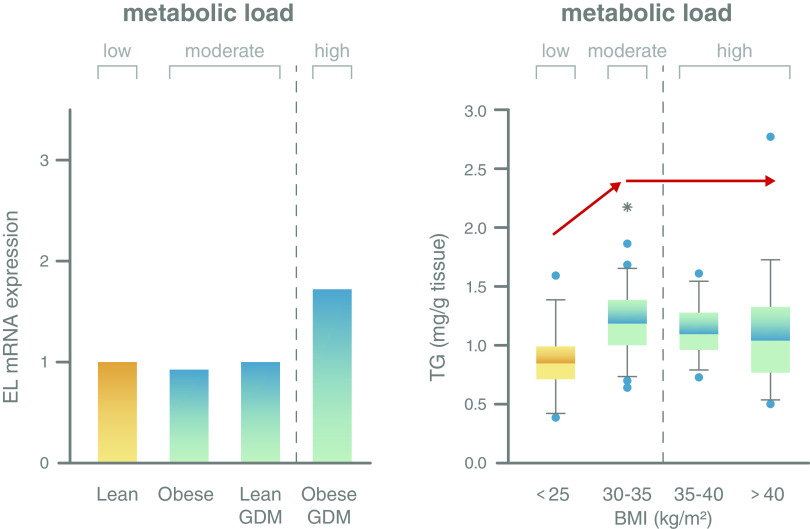Figure 3.
Placental homeostatic capacity has its limits resulting in potentially adverse changes when the metabolic load exceeds this limit. Left panel: Expression of endothelial lipase (EL), a gene that is involved in lipid metabolism and perhaps fatty acid supply to the fetus, is stable in maternal obesity and GDM and only responds when metabolic load is high, i.e., in GDM and obesity (64). Importantly, the association of maternal obesity with adverse outcomes such as high neonatal fat mass is independent of maternal (gestational) diabetes (5). Right panel: Placental accumulation of triglycerides (TG) as a means to protect against lipotoxicity (63) increases with increasing maternal metabolic load, i.e., between lean women and women with class I obesity (BMI 30–35 kg/m2). This capacity is exhausted with a further increase in load, i.e., in women with class II and III obesity (BMI 35–40 and >40 kg/m2), and no further additional triglycerides are stored (64).

